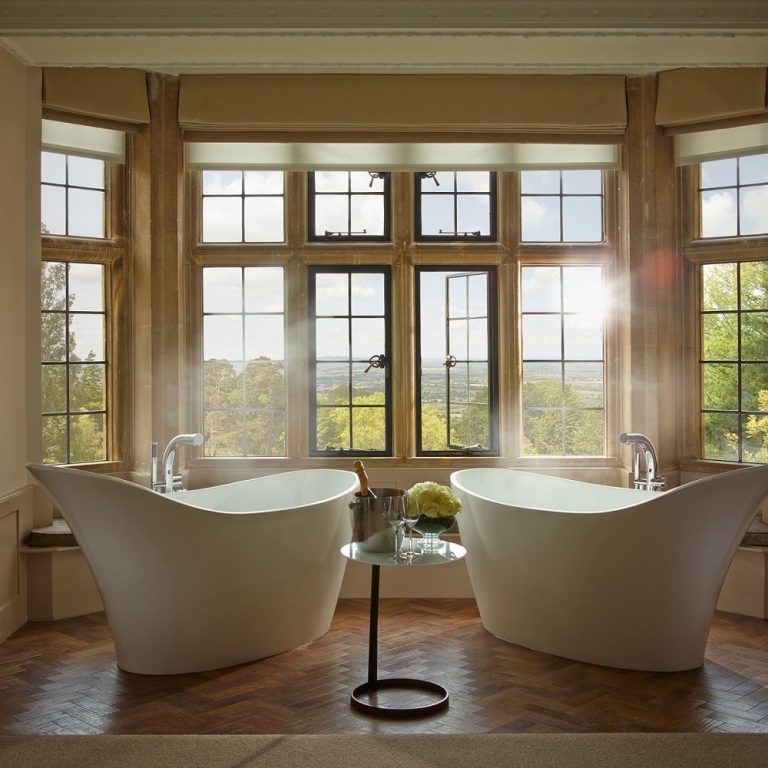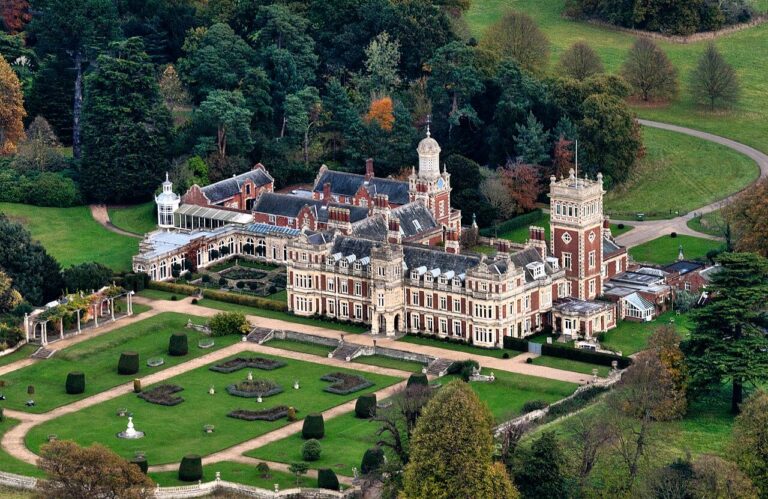The Best Castles & Stately Homes in Cheshire
Cheshire is a rural county located in the north west of England bordering Wales. The county is dotted with charming villaged with half timbered houses. And the southwestern part of the Peak District National Park is also located in this county.
There is plenty to see in Cheshire including beautiful country estates. One of England’s most famous country house is located in Cheshire. As the filming location for Pride & Prejudice’s Pemberley, Lyme Park became world famous when Colin Firth strolled through its gardens. But there are plenty of historic houses, castles, and gardens to visit in Cheshire.
And with major cities as Liverpool and Manchester nearby, you can easily visit these historic houses as a day trip from these towns.

Lyme Park
Lyme Park is a grand country estate and the house is the largest in the county of Cheshire. The estate was granted to Sir Thomas Danyers in 1346 and in 1388 it passed to the Leghs of Lyme family. The Legh family would own the estate until 1946 when it transferred to the National Trust.
The country house dates from the late 16th century with remodels in the 1720s and the 19th century. The house now shows a mixture of architecture styles, mainly Elizabethan, Palladian, and Baroque. Surrounding the house are formal gardens that were designed in the late 19th and early 20th centuries.
Lyme Park has been used as the filming location for Pemberley in the BBC adaptation of Jane Austen’s Pride & Prejudice.
Where: Disley
Built: 16th century
Style: Elizabethan, Palladian, Baroque
Visitor information: the house and gardens are open to visitors. Visit the website for more information.
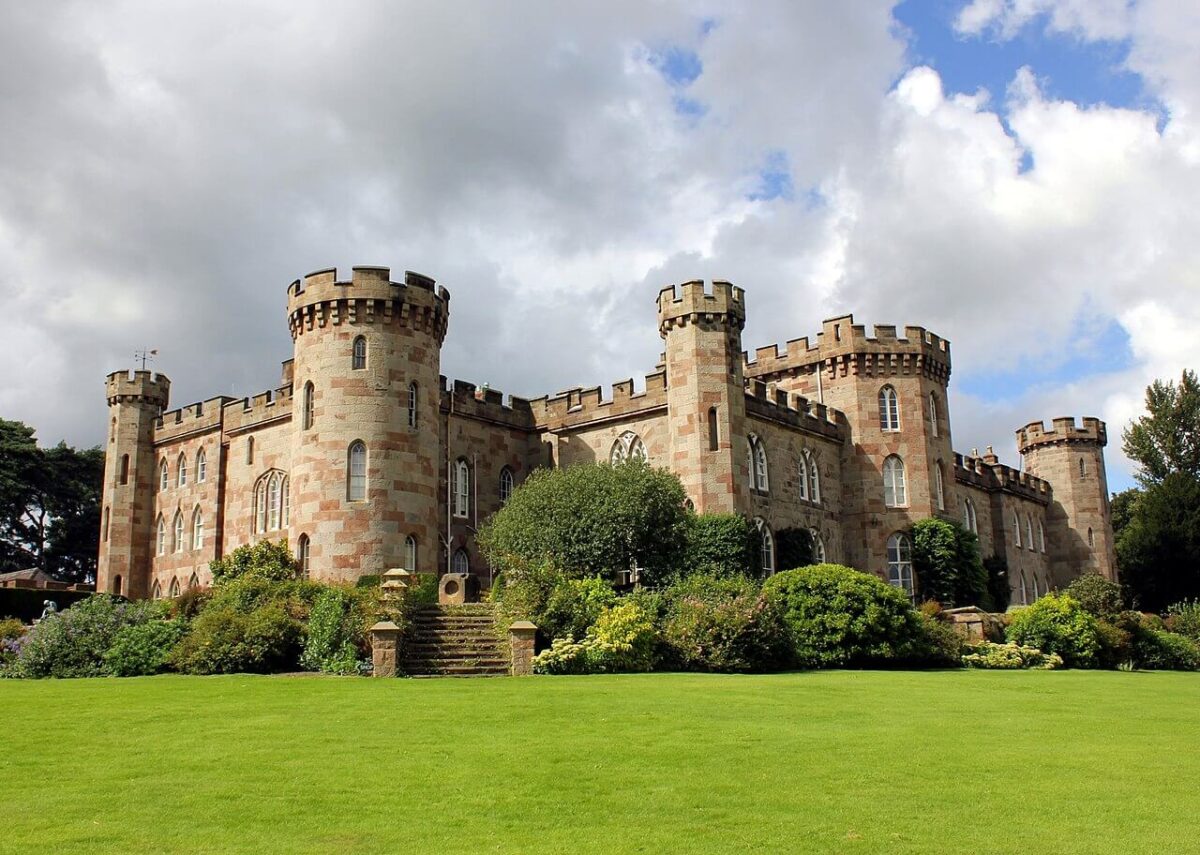
Cholmondeley Castle
Cholmondeley Castle stands on the site which has been the family seat of the Cholmondeley family 12th century. In the early 19th century, the previous timber-framed hall was replaced with the current crenelated castle by George Cholmondeley, 1st Marquess of Cholmondeley.
The formal gardens were first laid out in the 17th century but they were redesigned by William Emes a century later into a landscape park. Lavinia, the widow of the sixth Marquess, further developed the gardens in the 20th century.
Where: Cholmondeley
Built: 1801–04
Visitor information: the castle is not open to visitors. But the gardens are open in the Summer season. Visit the website for more information.
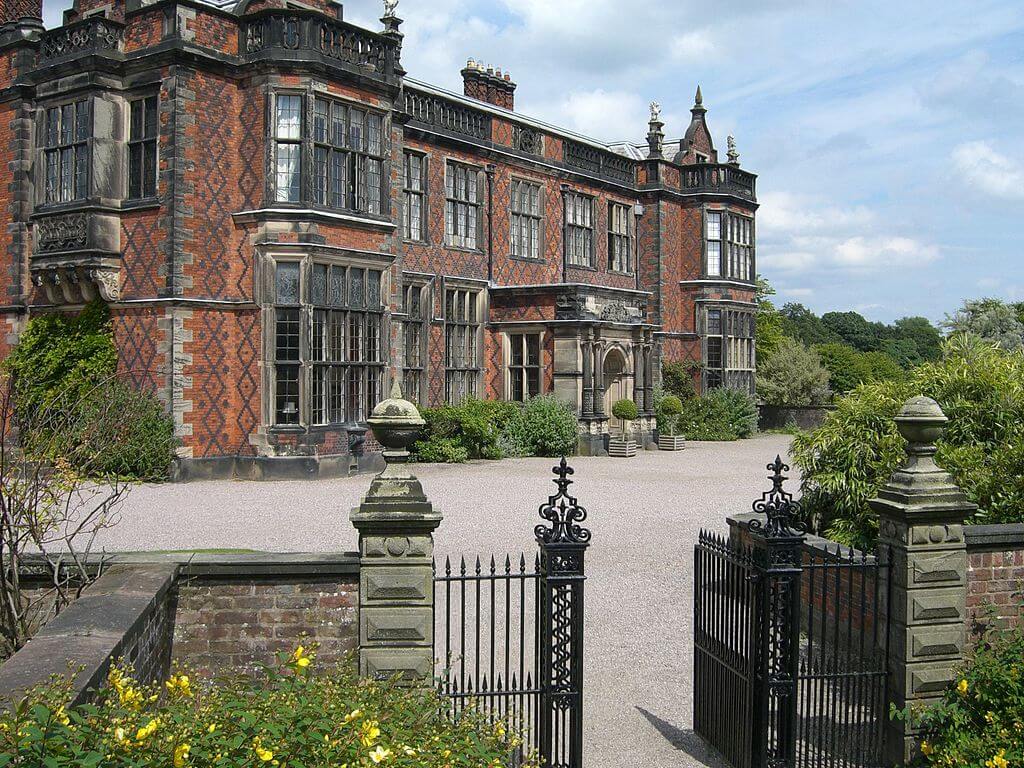
Arley Hall
Arley Hall is a country house and home of the Viscount Ashbrook and his family. The house was built between 1832 and 1845 for Rowland Egerton–Warburton in Jacobethan style. Next to the hall stands a Gothic chapel designed by Anthony Salvin. The interiors of Arley Hall have elaborate ceilings and oak panelling, impressive fireplaces, stained glass, and beautiful furnishings.
The eight acres of formal gardens have been developed since the 18th century and have the first Herbaceous Border planted in England.
Where: Arley
Built: 1832–45
Style: Jacobethan
Visitor information: the house and gardens are open to visitors. Visit the website for more information.
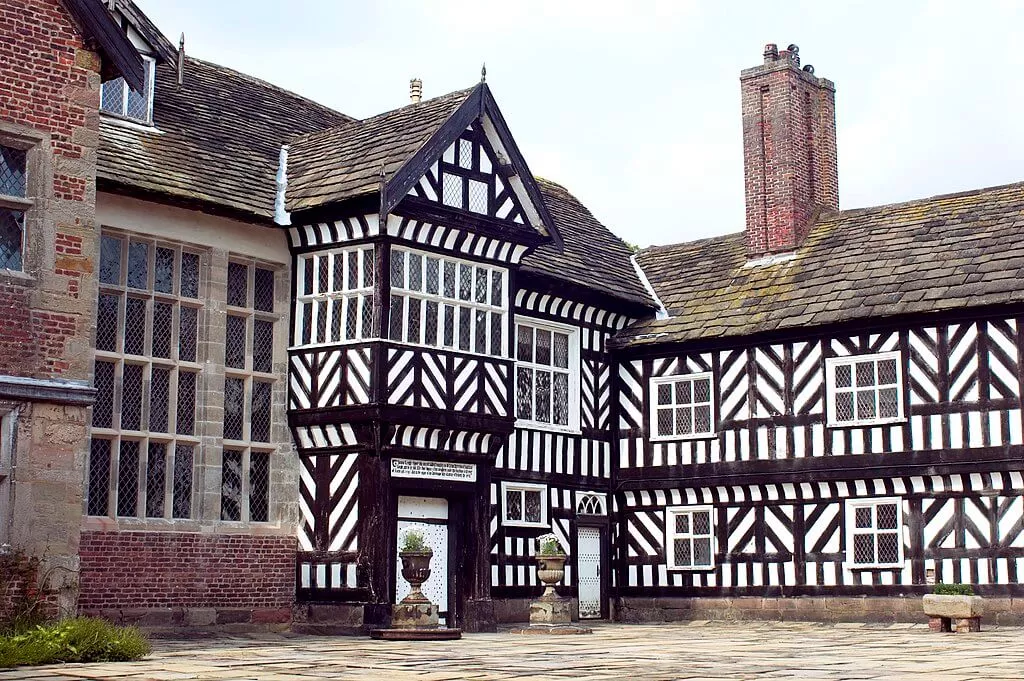
Adlington Hall
Adlington Hall is a historic house in the heart of county Cheshire. The Great Hall is the oldest part of the house which dates back to 1480–1505, it is a great example of Medieval craftsmanship. Since the early 14th century the Legh family has lived at this site and they still live in the current country house.
Surrounding the house lies beautiful gardens that were probably first designed in the 18th century in the style of Capability Brown.
Where: Adlington
Built: 1480, partly rebuilt in the 18th century
Visitor information: the house and gardens are open to visitors on selected days. Visit the website for more information.
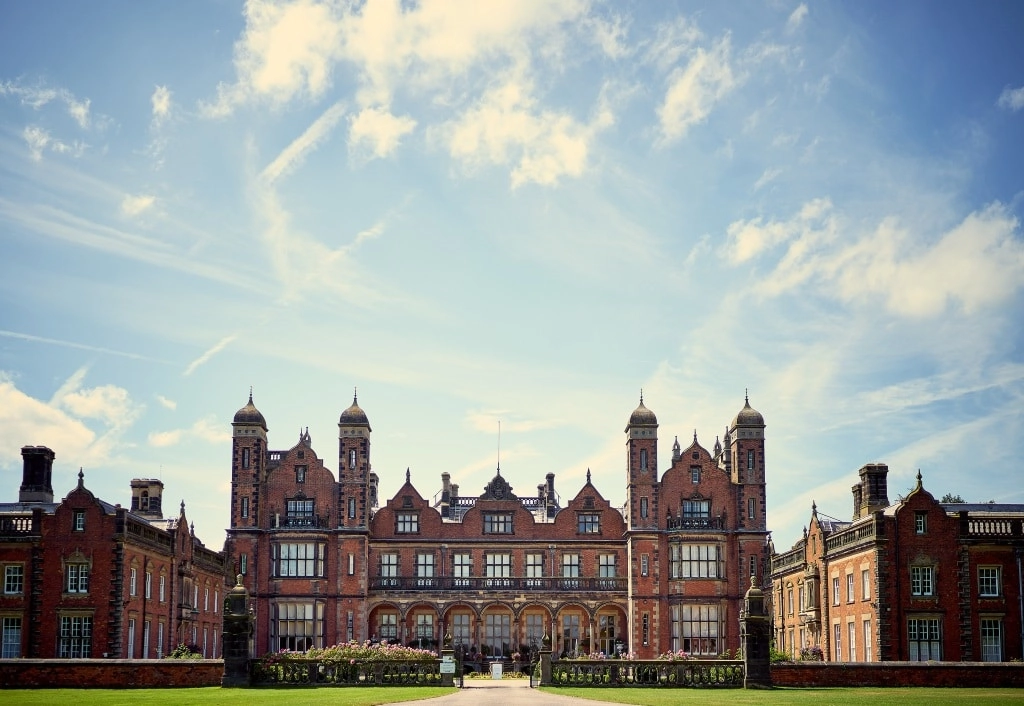
Capesthorne Hall
Capesthorne Hall is a family-owned stately home in Cheshire. The house and private chapel were built in the early 18th century for John Ward and is currently still owned by his ancestors the Bromley-Davenport family. In the 1830s the house was remodeled and this is when it got its present Jacobethan exterior.
Surrounding the house lies a park with formal gardens that include rare 18th century plants, maples , and cherry trees.
Where: Siddington
Built: 1719–32
Style: Jacobethan
Visitor information: the hall and gardens are open to visitors on selected days. The hall can also be hired for weddings and events. Visit the website for more information.

Gawsworth Old Hall
Gawsworth Old Hall is a Tudor manor house that replaced an earlier Norman house. The current house was built between 1480 and 1600 and since Norman times the house has only been owned by five families.
Famous residents of Gawsworth Old Hall are Mary Fitton (who may be the “Dark Lady” in William Shakespeare’s sonnets and who was also Queen Elizabeth’s maid of honour.) and the playwright Samuel Johnson.
Surrounding the house are formal gardens and parkland.
Where: Gawsworth
Built: 1480
Style: Tudor
Visitor information: the house and gardens are open on selected days. Visit the website for more information.

Little Moreton Hall
Little Moreton Hall (or Old Moreton Hall) is a half-timbered moated manor house in Cheshire. The house was built in the early 16th century by William Moreton and it was extended until 1610. The house has a top-heavy appearance thanks to the Long Gallery that runs the length of the south range’s upper floor.
The Moreton family owned the house for almost 450 until it was transferred to the National Trust. In the 20th century the garden were recreated after a 17th century design.
Where: Congleton
Built: 1504
Style: Tudor
Visitor information: the house is open to visitors. Visit the website for more information.
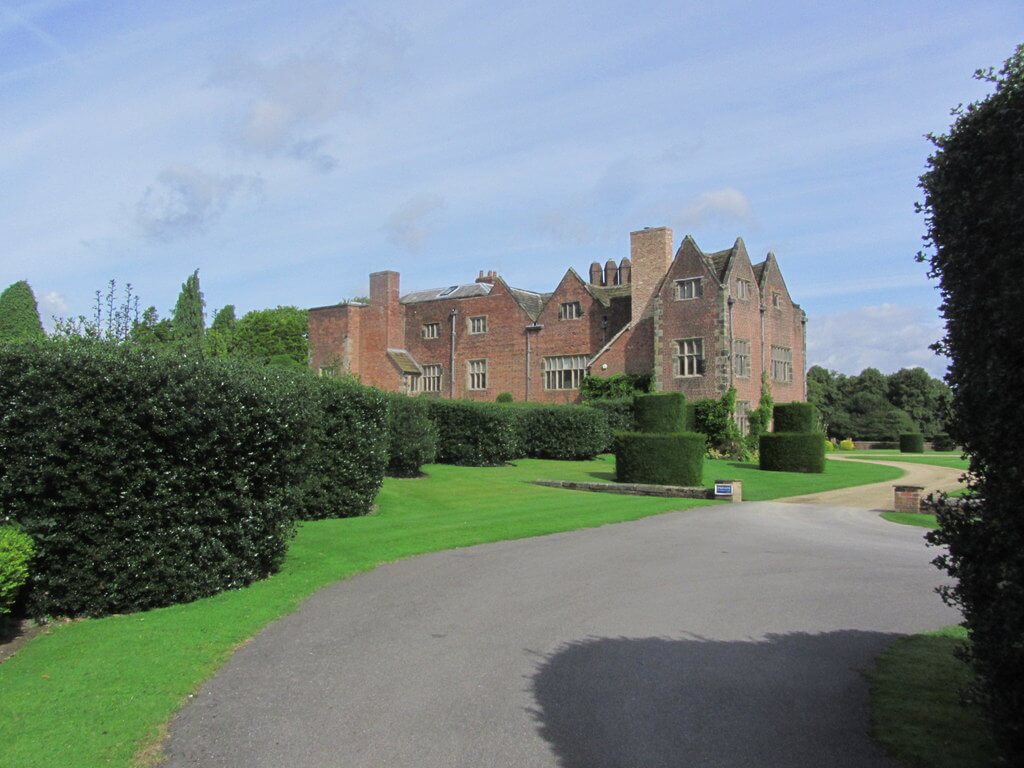
Peover Hall
Peover Hall is a 16th century Elizabethan country house that was built for Sir Randle Mainwaring. The interiors of the hall have richly decorated oak paneling, a long gallery, and furnishings from other country houses and with a connection to Peover and the Mainwaring family. Surrounding the hall are beautiful gardens.
During the Second World War, the house was used as the HQ for General George Patton of the United States 3rd Army to rain for the D-Day landings. It was also used as a prisoners of war camp.
Where: Peover Superior
Built: 16th century
Style: Elizabethan
Visitor information: the house and gardens are open to visitors. Visit the website for more information.
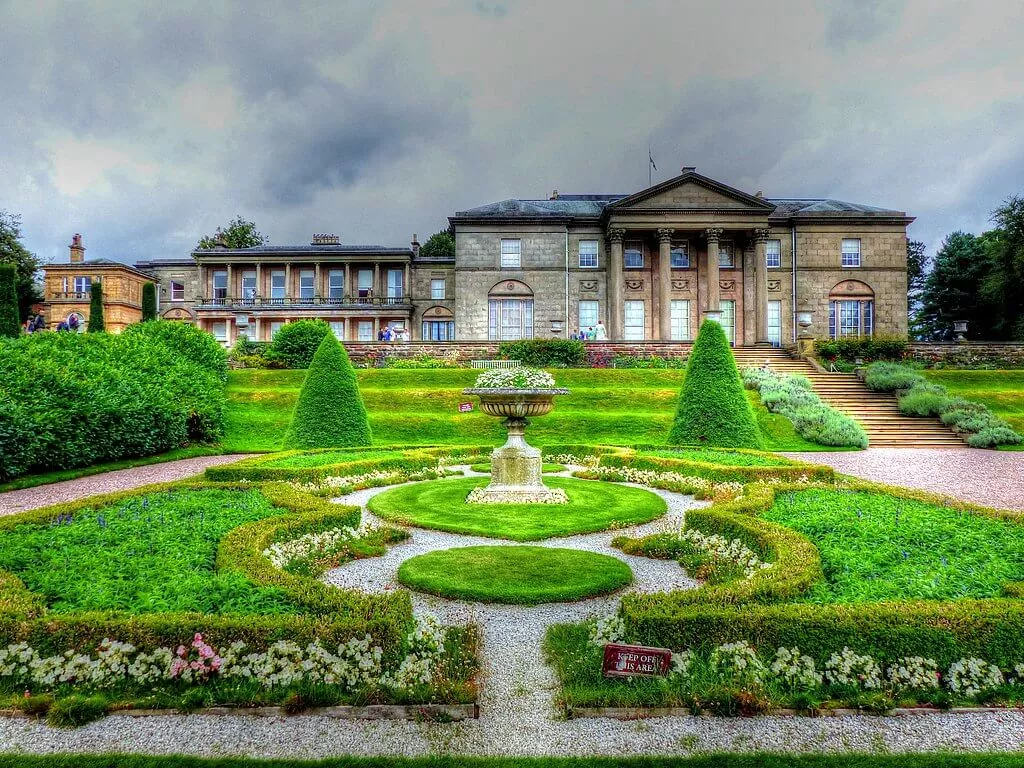
Tatton Hall
Tatton Hall is a Neoclassical country house that was built in the 1770s for the Egerton family. Wilbraham Egerton, 1st Earl Egerton hosted lavish parties at the house which guests that included the Prince and Princess of Wales and the Shah or Persia.
Surrounding the house lie 50 acres of landscaped gardens and 1000 acres of deep Park.
Where: Knutsford
Built: 1770s
Style: Neoclassical
Visitor information: the hall and gardens are open to the public. Visit the website for more information.

Walton Hall
Walton Hall is a 19th century country house and former home of Lord and Lady Daresbury. Surrounding the house are acres of parkland that include a Zoo, adventure golf and a playground.
The hall with antique furnishings, Victorian paintings, an oak-panelled hall, grand staircase and high gilded ceilings can be rented for weddings.
Where: Walton
Built: 19th century
Visitor information: the house and gardens are open to visitors. Visit the website for more information.
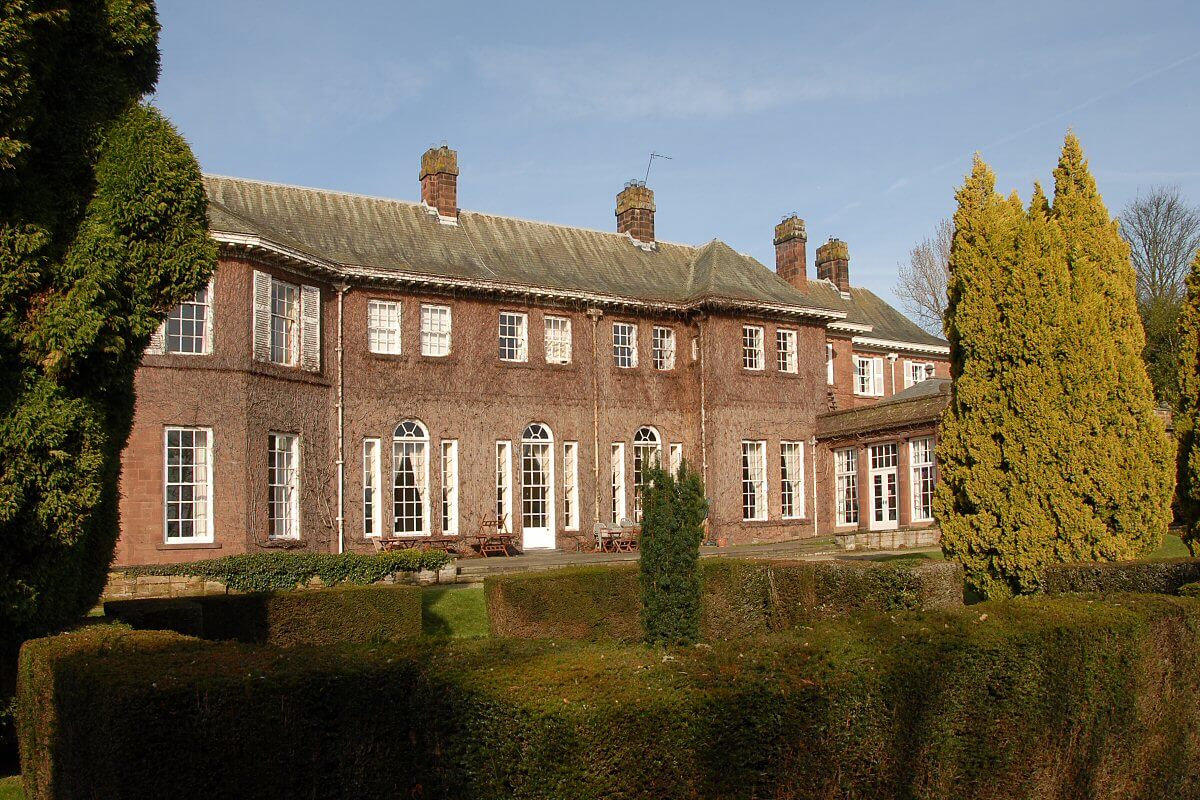
Burton Manor
Burton Manor is a former manor house in Cheshire. The early 19th-century home was built for Richard Congreve and later remodeled by Sir Charles Nicholson for Henry Neville Gladstone. The house is no longer a private residence and it’s not open to the public. The early 20th century garden is open to the public. The garden is maintained by Friends of Burton Manor Gardens, a group of volunteers who conserve original Victorian and Edwardian gardens.
Where: Burton
Built: 1805
Visitor information: the gardens are open to visitors. Visit the website for more information.
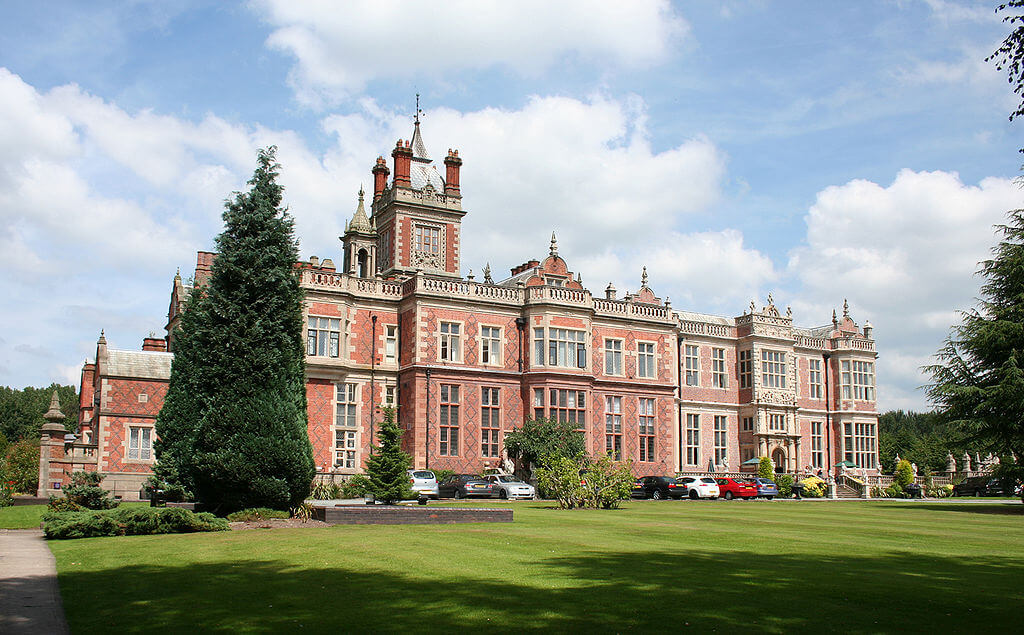
Crewe Hall
Crewe Hall is a Jacobean manor house near Crewe Green in Cheshire. The house was built in the early 17th century for Sir Randolph Crewe and remained in the Crewe family until 1936. After a fire in 1866, the hall was restored by architect E.M. Barry and it’s considered one of his finest works.
Crewe Hall is currently a four star country house hotel and spa. Book your stay.

Peckforton Castle
Peckforton Castle is not actually a castle. Instead, it is a Victorian country house that was built in the style of a medieval castle. The house was built in the 19th century for John Tollemach after a Gothic design by Anthony Salvin.
The house is now a luxury country house hotel and wedding venue.



